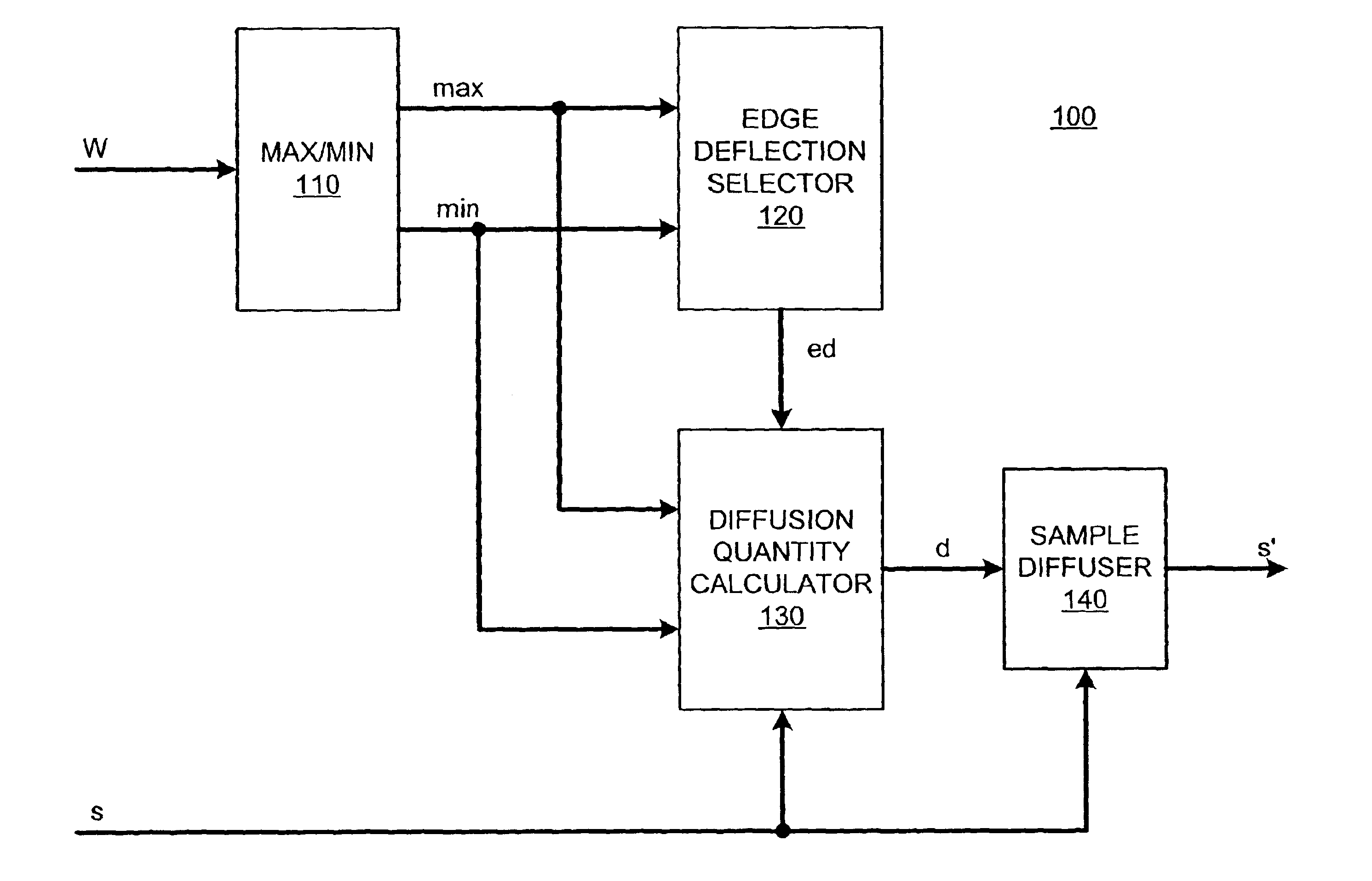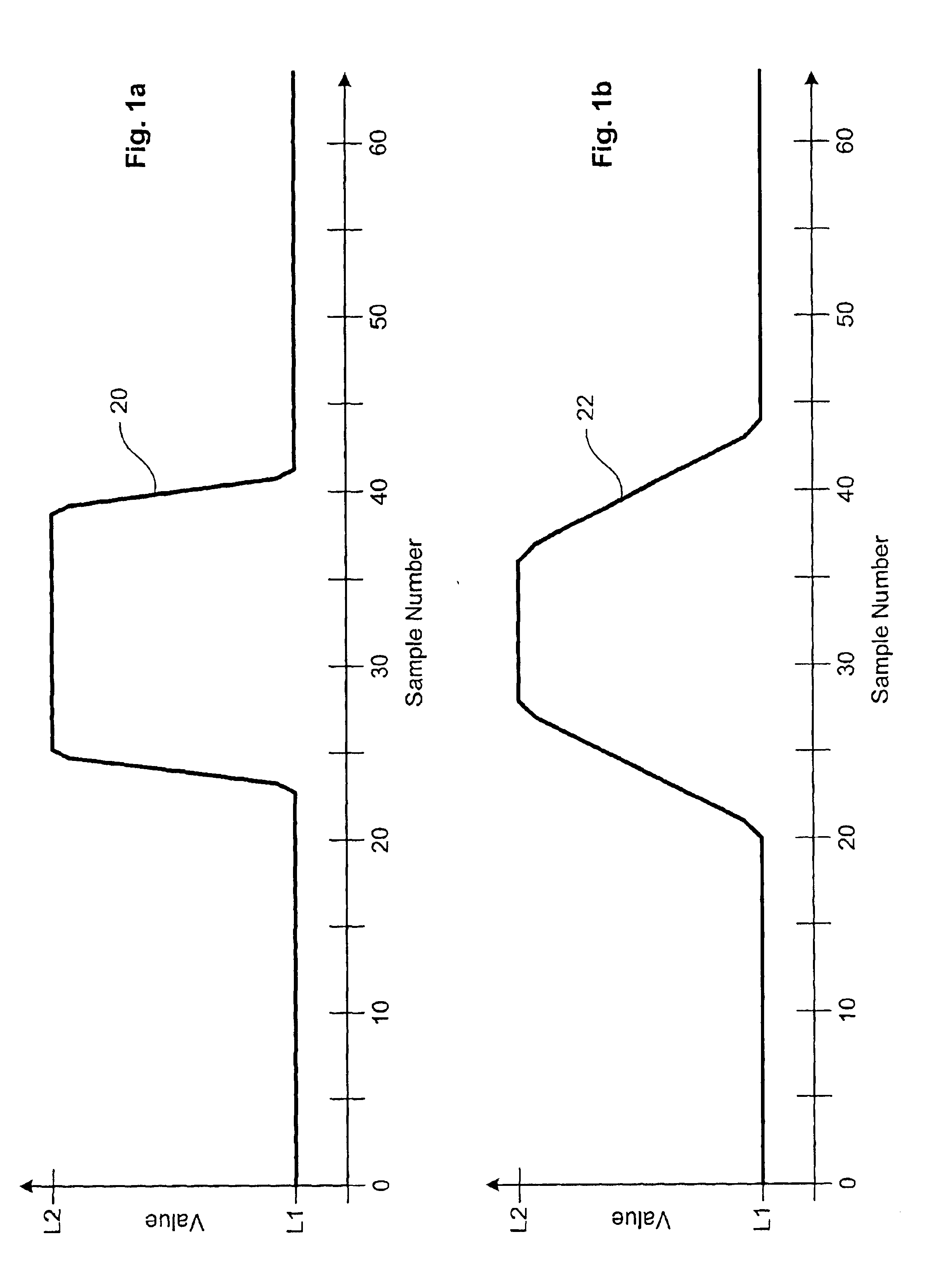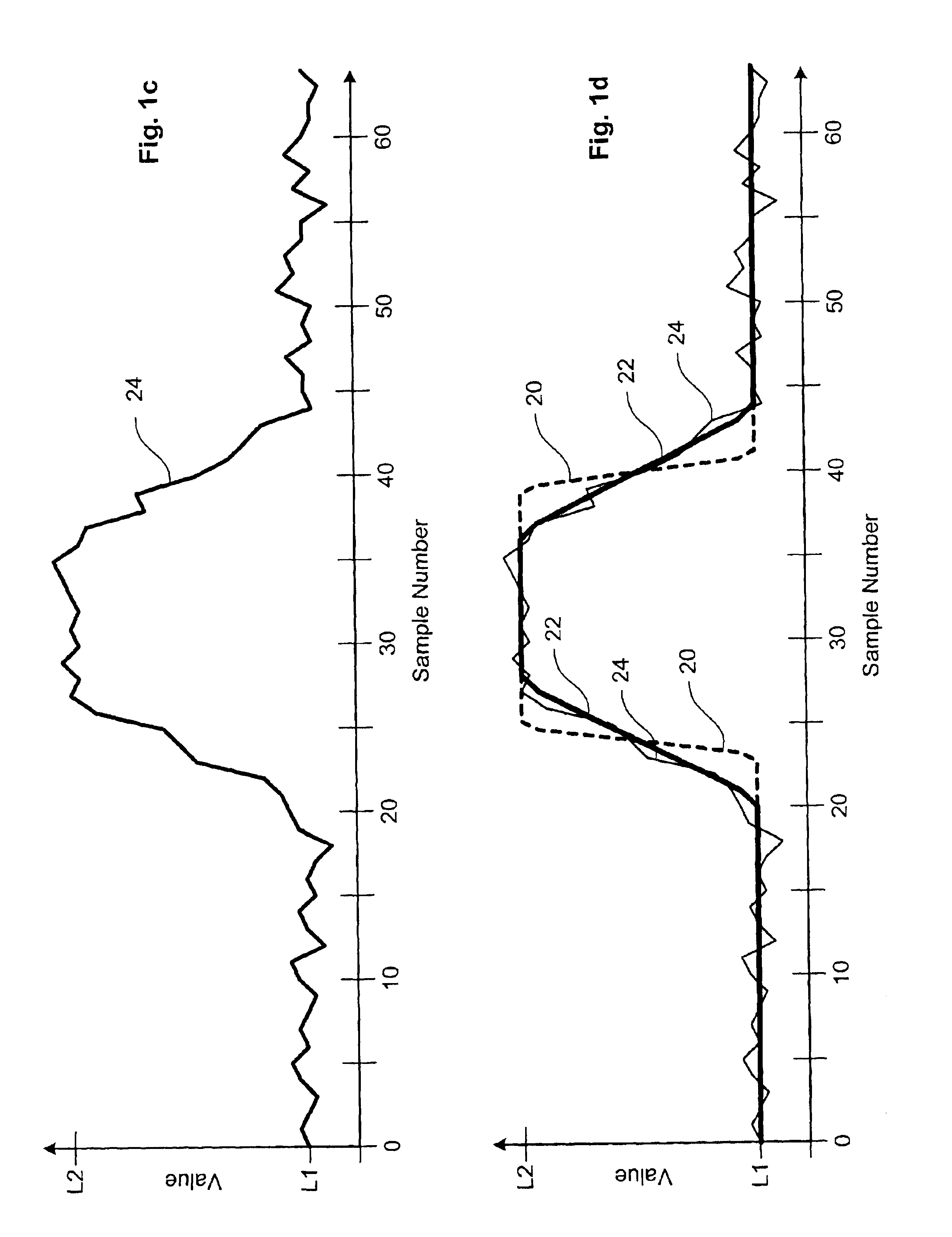Nonlinear edge-enhancement filter
- Summary
- Abstract
- Description
- Claims
- Application Information
AI Technical Summary
Benefits of technology
Problems solved by technology
Method used
Image
Examples
Embodiment Construction
The following examples rely heavily on one-dimensional digital data arrays, such as might be obtained by temporally sampling the output of a sensor. Such examples are easily comprehended and are presented for ease of description. Nevertheless, those skilled in the art will recognize that the present invention has application for a general n-dimensional array, regardless of the source of the data in the array. Particular embodiments of the present invention have been demonstrated to work well on two-dimensional data arrays such as grayscale and color images.
Referring first to FIGS. 1a and 1b, a one-dimensional digitally sampled rectangular pulse is illustrated, with the leading pulse edge centered at sample 24 and the trailing pulse edge centered at sample 40. Each pulse has a minimum value L1 and a maximum value L2. The difference between the two figures is the sharpness of the pulse edges. For a one-dimensional signal s(x), a positive step edge can be characterized by the equation ...
PUM
 Login to View More
Login to View More Abstract
Description
Claims
Application Information
 Login to View More
Login to View More - R&D
- Intellectual Property
- Life Sciences
- Materials
- Tech Scout
- Unparalleled Data Quality
- Higher Quality Content
- 60% Fewer Hallucinations
Browse by: Latest US Patents, China's latest patents, Technical Efficacy Thesaurus, Application Domain, Technology Topic, Popular Technical Reports.
© 2025 PatSnap. All rights reserved.Legal|Privacy policy|Modern Slavery Act Transparency Statement|Sitemap|About US| Contact US: help@patsnap.com



